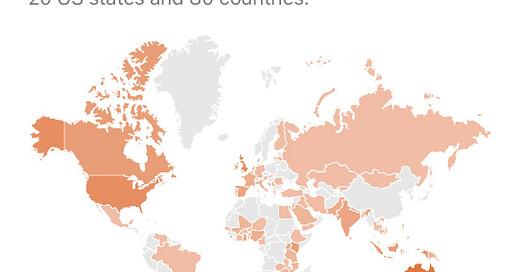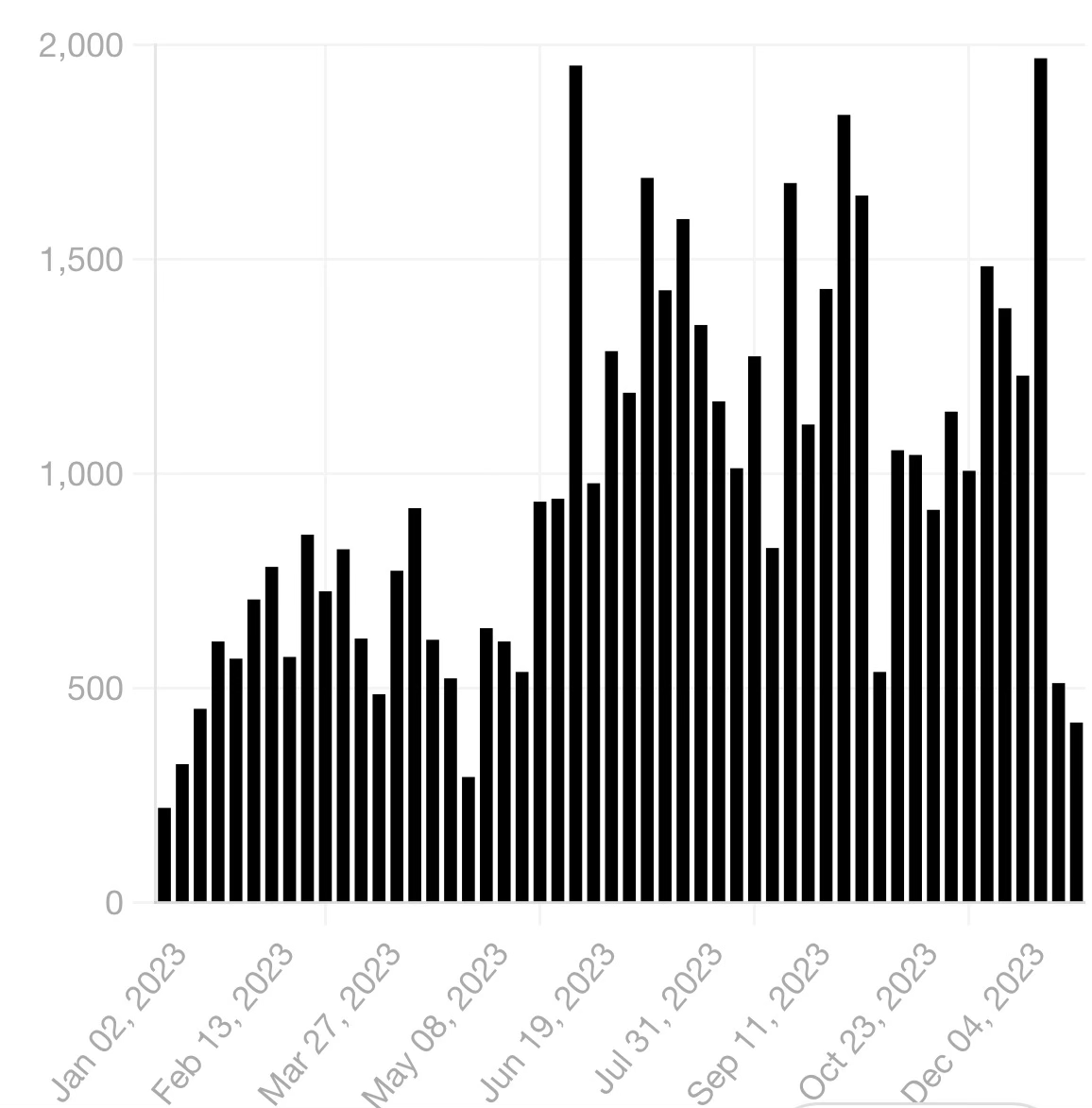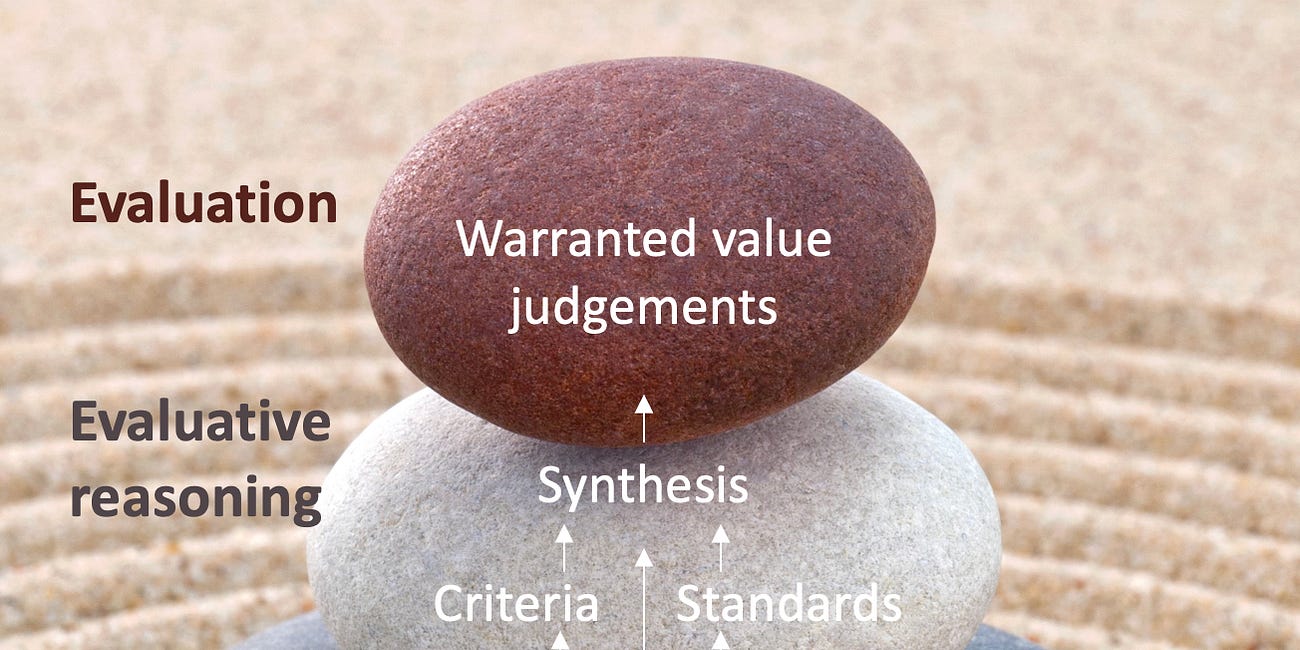Happy New Year!
Hi all! For recent subscribers, allow me to introduce myself. I’m Julian. I help people use evidence and explicit values to make good decisions. I specialise in evaluation and value for money capability building. You can hit me up for training, on-the-job mentoring, technical advice and peer review. We can join forces to tackle a project together or develop your organisation’s evaluation systems and capabilities. From Auckland NZ I work with a global client base that spans every continent except, thus far, Antarctica. (Are you in Antarctica? Penguins asking value for money questions? I’m here to help!)
Evaluation and Value for Investment is one year old today🧁
I joined Substack in Nov 2022 but this account wasn’t really ‘born’ until I sent the first post out on 5 Jan 2023. My aim is to share content that’s useful, interesting and a little bit entertaining.
Why did I do it?
Curiosity, mainly. To see if it’s a good way to upcycle content from my doctoral research and other work while gradually writing a book. Conclusion: yes.
I like Substack’s free market ethos.
We’re all free to write about anything on here. Anyone who finds it interesting is free to subscribe. There’s no gatekeeping algorithm. No word limit. I’m off most social media because I don’t like the Lord of the Flies vibe. This platform operates by a different set of principles, making it feel more like social media for grownups. It’s evolving, of course.
A few stats from 2023
53 posts, covering aspects of:
The Value for Investment approach (11 articles)
And a mixed bag of other topics (20 articles ranging from navigating criticisms of evaluation methods to program theory and value propositions).
51,000 reads! Thank you for being part of this community.
Half my readers last year were direct email subscribers (50%), the other half coming here via the Substack app (36%), LinkedIn (11%), or some other doorway (3%).
These were my top 6 most-read posts in 2023:
In case you missed them, I’ve made them open-access for a little while.
Different kinds of rubrics
Rubrics are versatile things. They’re used in fields as diverse as teaching, geology, medicine, meteorology, evidence appraisal, and causal inference. They can be used to help evaluators judge the value of things. They can also be used to elicit evaluative data from stakeholders, like this example from
EvalGPT
It’s the future (a Monday morning in January 2024). Egbert the Evaluator logs into his computer. First order of business: triaging 200 unread emails. He gets EnateAI to do it for him. It’s all done and waiting when he gets back to his desk with an espresso five minutes later.
Evaluative reasoning in complexity
Making value judgements on a transparent, defensible basis is a core function of evaluation, and there are many ways to approach it. Rubrics are one way of scaffolding evaluative judgements. There are multiple kinds of rubrics, and there are other options
Program Theory GPT
When designing a process or outcome evaluation, a program’s theory of change can be an important tool for identifying organisational actions, impacts, causal mechanisms, and aspects of performance to focus on. However, when we’re designing an evaluation that looks at value for money (VfM), it can take a conceptual leap to get from a theory of change to …
New VfM guide for evaluators
I’m excited to share this new document, which provides guidance on how to design and implement evaluations that provide better answers to value for money questions. This open-access guide describes the principles and processes underpinning the Value for Investment
Evaluative thinking
Evaluative thinking is an important yet elusive concept: challenging to define or generalise about, complex to translate into something concrete and practical. But I’m going to try. We can appreciate its complexity, but perhaps we also need something simple enough and memorable enough to guide our practice.
Coming up soon:
New journal article on uncomfortable truths, principles and methods for answering value for money questions
Launch of a new VfM assessment guide
Substack fails - my favourite under-read posts from 2023 and why I think they’re worth a look
Determining context-specific criteria of good resource use
Navigating stakeholder wants and needs in VfM assessment.
What else would you like to see?
Ask me anything! If I’m able, I’ll address it in a future post.
50% discount - one week left
New posts on Evaluation and Value for Investment are free for 2 months. To access the growing archive of resources, there’s a free 7-day trial with the option to become a paid subscriber. I’m offering a 50% discount on annual subscriptions until 12 Jan. Follow this link to access the discount.
Free resources on my website
For the briefest introductory overview of the VfI approach to share with your boss, client, board, or stakeholders, here’s:
a downloadable, printable one-page PDF overview (1-minute read)
the VfI landing page on my website (2-minute read)
an animated overview on YouTube (2-minute watch).
For deeper dives into the theory and practice of VfI and real-world-examples, check out my VfI resources page.














I love reading your Substack Julian so keep up the good work. I’m still seeking out an opportunity that might bring our worlds together --- it’ll happen in 2024 for sure. Happy New Year.